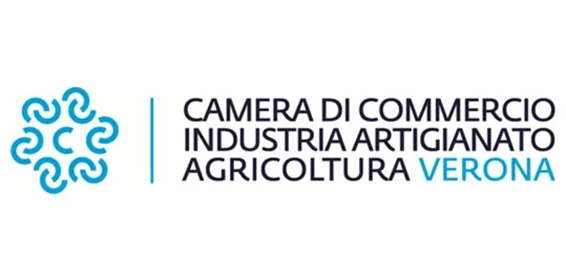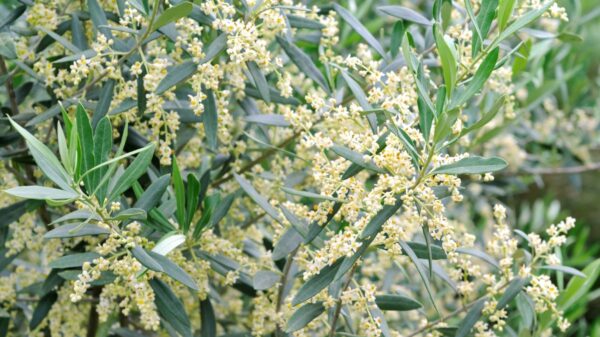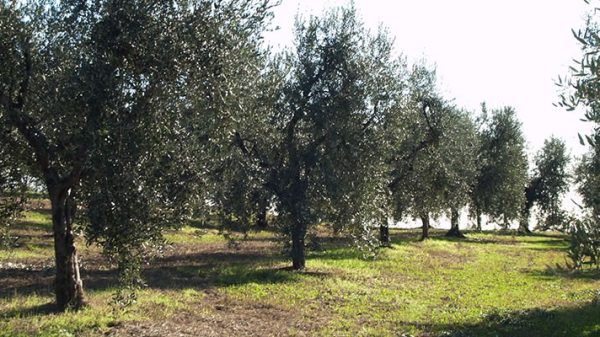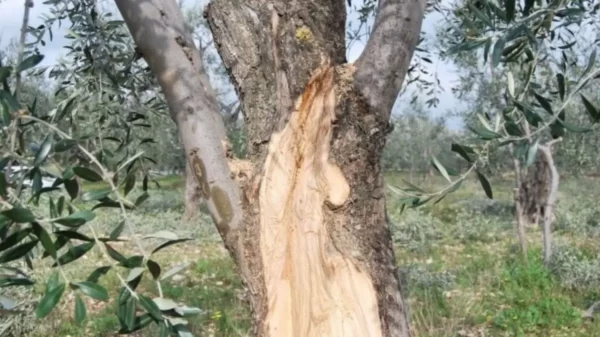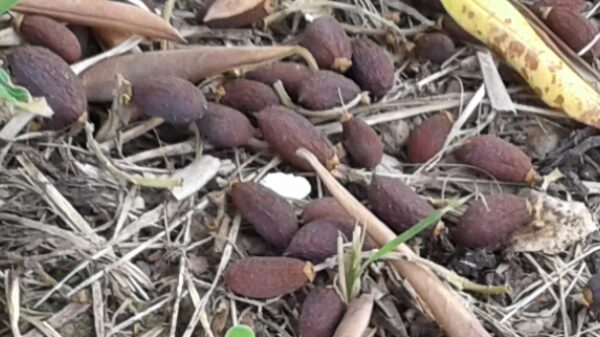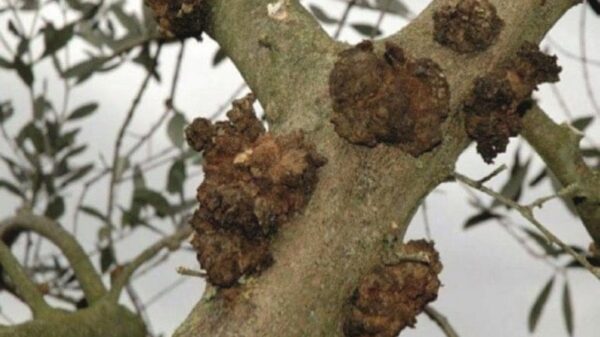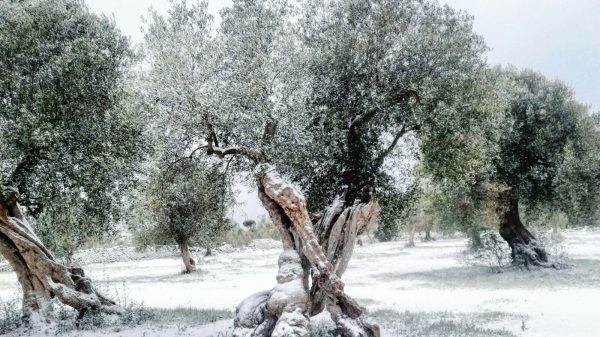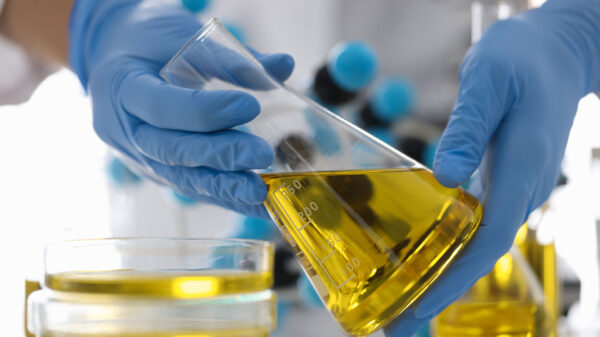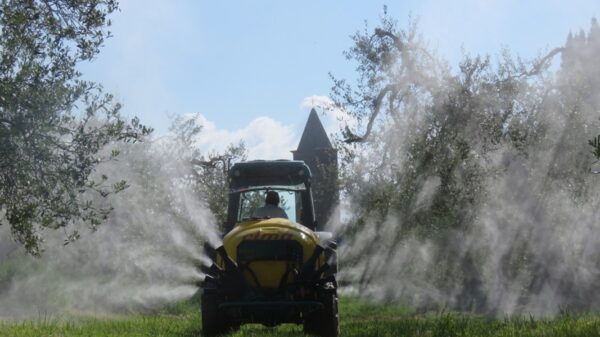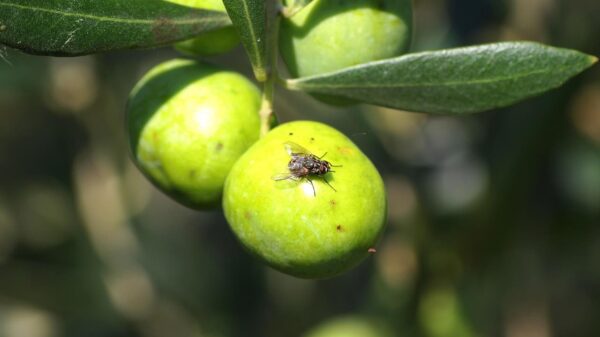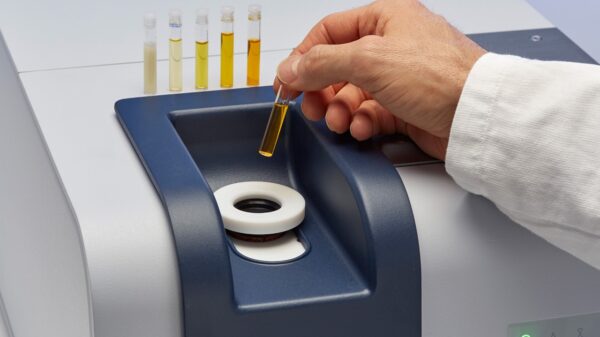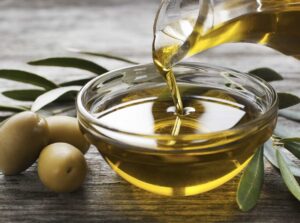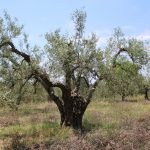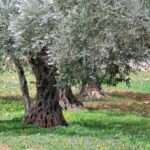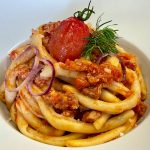The activity of pruning it's an opportunity to carry out an inspection of individual plants. In fact, it allows you to identify and remove dry branches or branches with the presence of insect galleries or branch cankers, caused by pathogens, such as fungi belonging to Botryospheriaceae or others like the Phoma. At the end of these operations it is necessary to implement a phytosanitary intervention to disinfect the cut wounds, to hinder the penetration of fungal pathogens, such asPeacock eye, Leprosy, Plumbing.
For this action we normally rely on cupric products, which have a preventive action and have a broad spectrum of action on fungal parasites and have a containment action on the bacterium of Olive scab, Pseudomonans savastanoi. This bacterium can survive on the surface of the leaves and reach a high population in spring and, if the vegetation remains wet for a long time, the olive trees are already predisposed to being infected.
Il copper acts on the outside of the vegetation and prevents the pathogen, whether fungal or bacterial, from penetrating plant tissues, constituting a chemical barrier formed by copper ions. This chemical barrier depends on the quantity of ions available in the product, the speed of their release, the resistance to degradation in the environment and to leaching, therefore, each copper salt has its own characteristics, which allow it to differentiate itself.
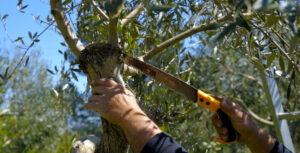
It is then important to take into account fineness of the particles: the lower it is, the greater the ability to cover the leaf or wood surfaces, thus improving the fungicidal activity and resistance to leaching. Small dimensions allow the cupric salt particle to remain in close contact with plant tissues, increasing their efficiency.
We thus find cupric products that offer rapid results, but tend to exhaust their activity when heavy rains arrive, other formulas that are less ready, but more persistent over time.
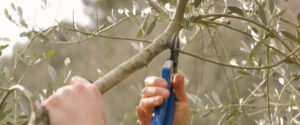
It should be considered that, at the beginning of the season, pruning is carried out with even significant climatic fluctuations, which alternate rapid rises and falls in temperatures, abundant or absent rainfall, so the plants become physiologically fatigued and respond less to external pathogens, especially fungi. Products that act quickly are therefore necessary, such asCopper hydroxide, with a high content of copper metal, which proceeds promptly and is distributed well on the vegetation, especially if in the presence of strong environmental humidity, has limited degradation both chemically and if exposed to light.
We then Tribasic copper sulphate which has a high particle fineness, which gives the product good covering power and high solubility in water. Its tendency towards acidity leads to a prompt effectiveness of action.
The antifungal pharmacopoeia also makes olive oil available to olive growers Dodina, a cytotropic product, suitable for use on wet vegetation, is rapidly absorbed and therefore easily escapes the washing away action of rain. The activity of Dodina is suitable for the control of fungal parasites from the first moments of vegetative growth until pre-flowering or, then, in the autumn period.
We still have the Potassium phosphate (example Mikonos of the Sipcam or the Phyto Sarcan or Cuneb of Gowan), which has a double effect: the direct toxic action against fungal pathogens combines a stimulating activity for the plant in activating resistance substances. Potassium phosphate is systemic, is rapidly absorbed by plant tissues and is transported to young growing organs, therefore, it protects new vegetation and is not washed away by rain. The phosphite ions present are transported into plants but are not involved in phosphorus metabolism, therefore they have no fertilizing action.
In preventive defense against pathogenic fungi you can use products based on tebuconazole, a triazole, combined with trifloxystrobin, a strobilurin (example Flint Max by Bayer), to be used from vegetative growth to pre-flowering; or pyraclostrobin, another strobilurin (example Olive Cabrio of BASF), to be used from the appearance of the inflorescences until the definitive dimensions of the drupe are reached.
Two products that is possible to use in organic farming, even if their limited effectiveness must be considered, they are the Potassium bicarbonate and Sodium bicarbonate, must be applied in solution on the vegetation and their fungicidal activity is given because they increase the pH of the leaf surface, making it basic, and thus creating an inhospitable environment for fungi which, to develop, require a sub-acid environment. Potassium and sodium bicarbonate are similar, but are regulated differently: the first is considered a fungicide and can be purchased if you have a phytosanitary licence. Sodium bicarbonate is considered a basic substance and a tonic, which can be acquired without a phytosanitary licence.
Manager AIPO
Interregional Association
Olive producers
Threshold for free Olive News click , here.
